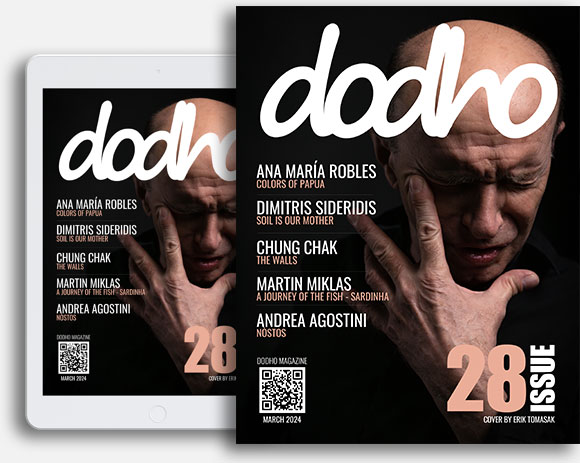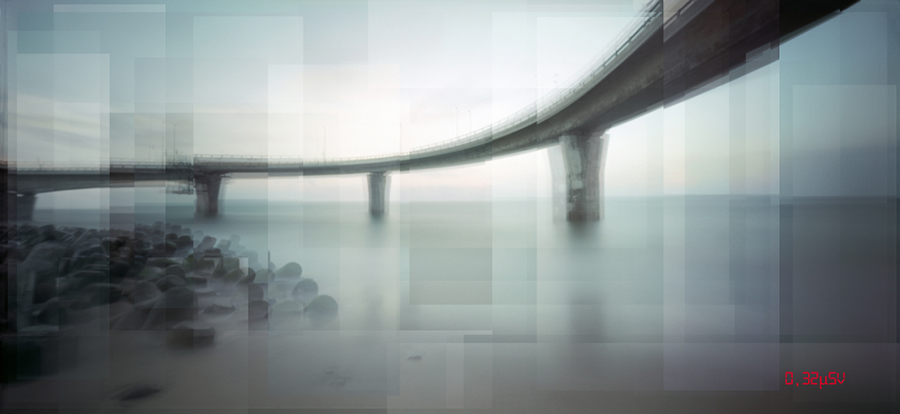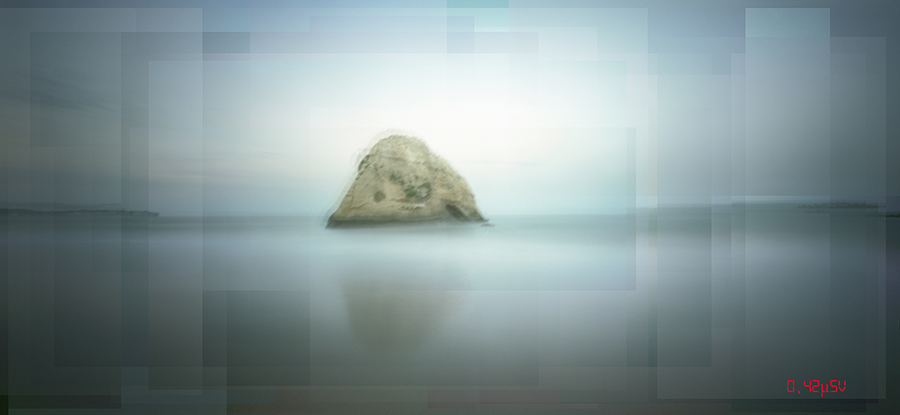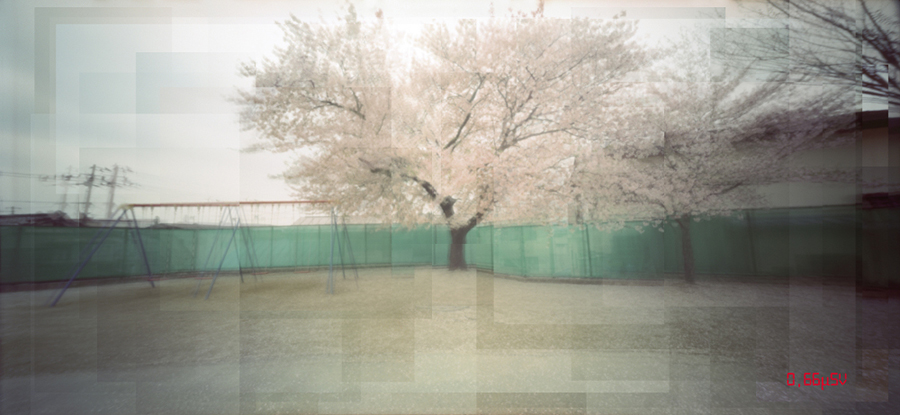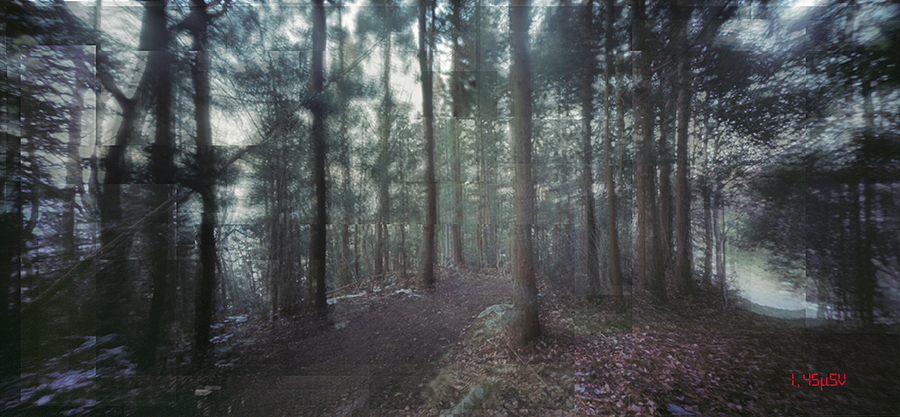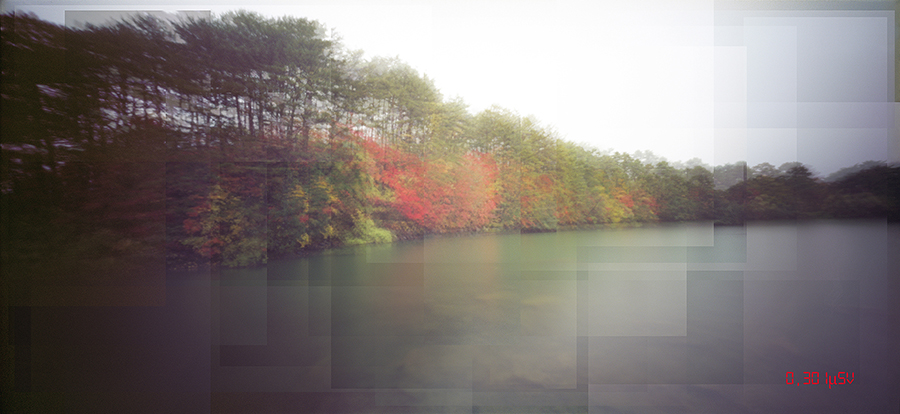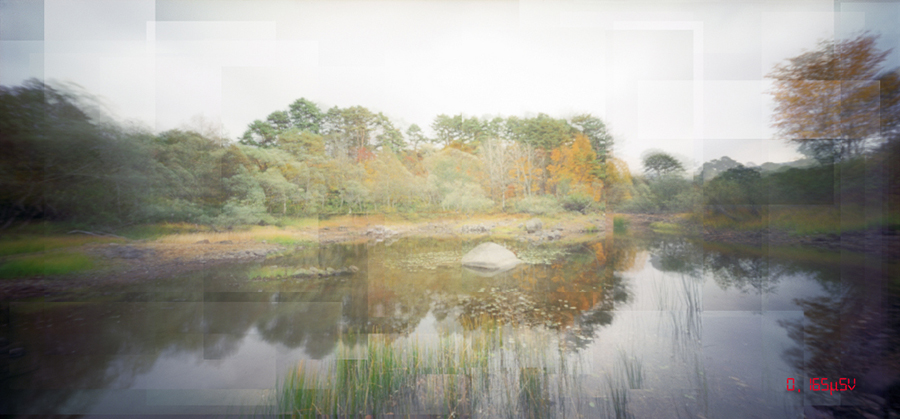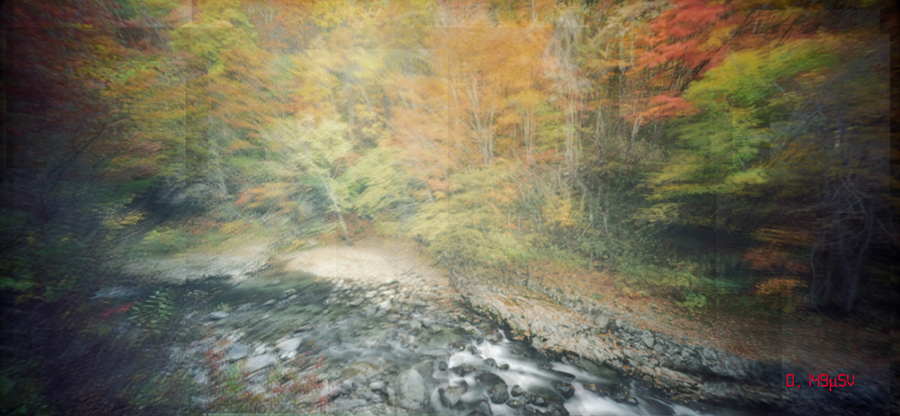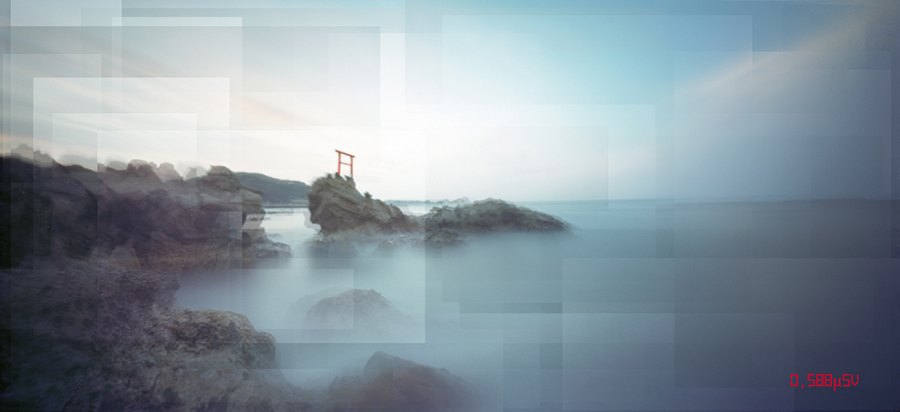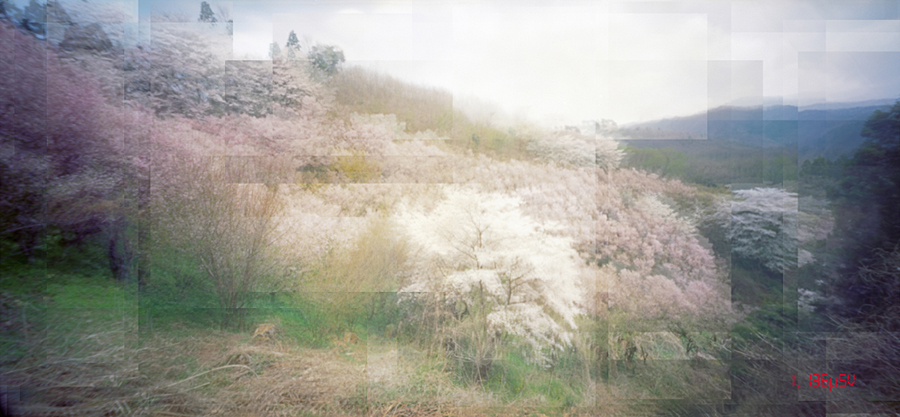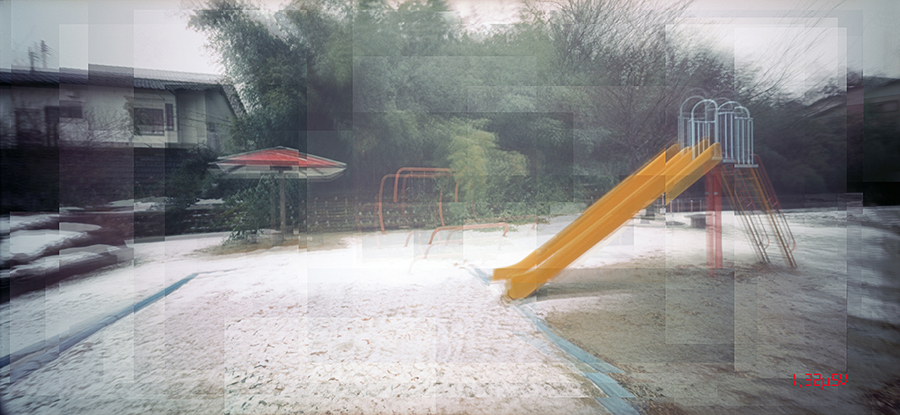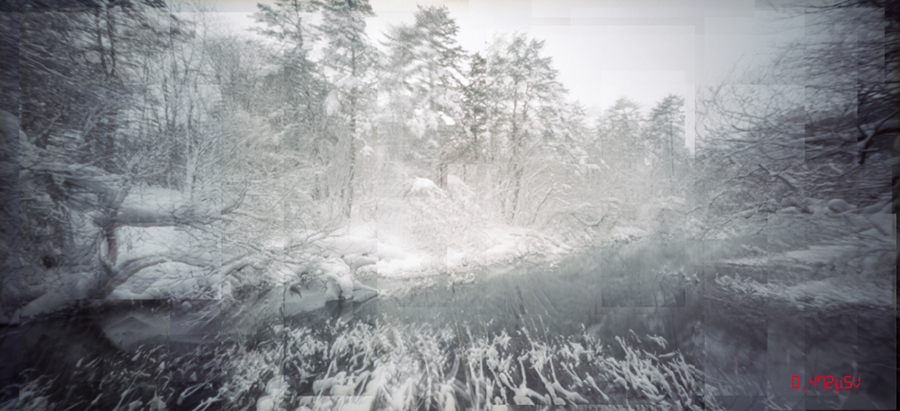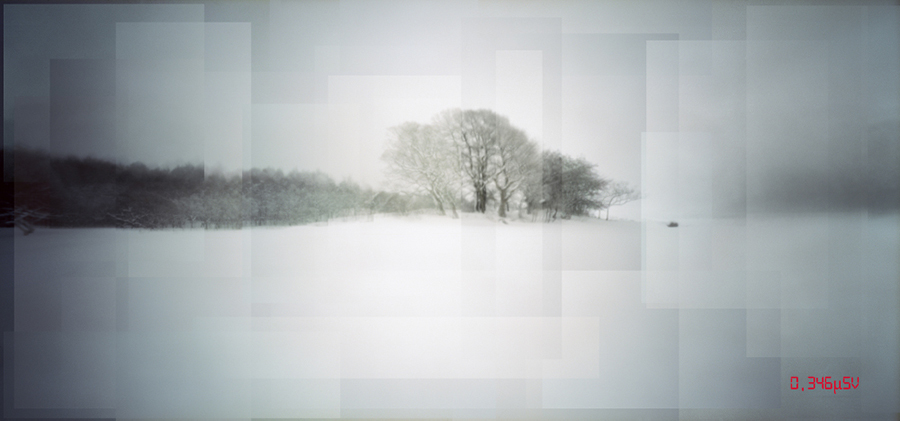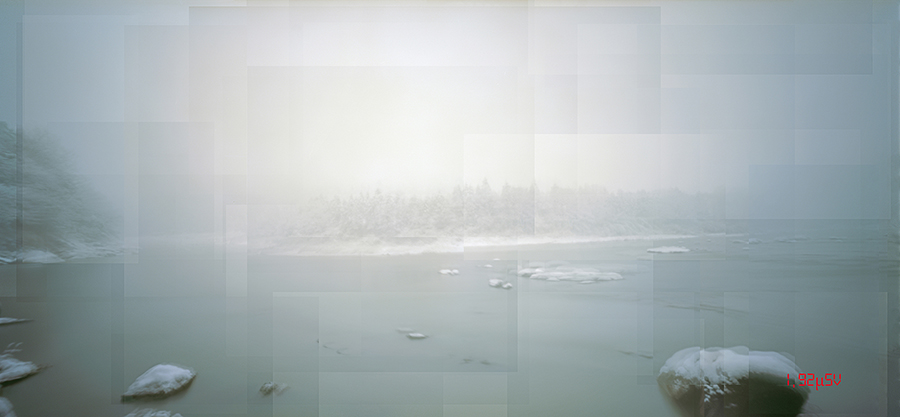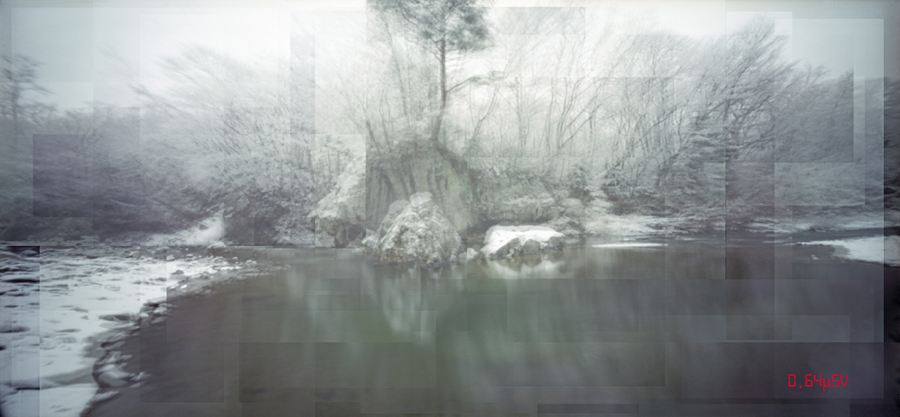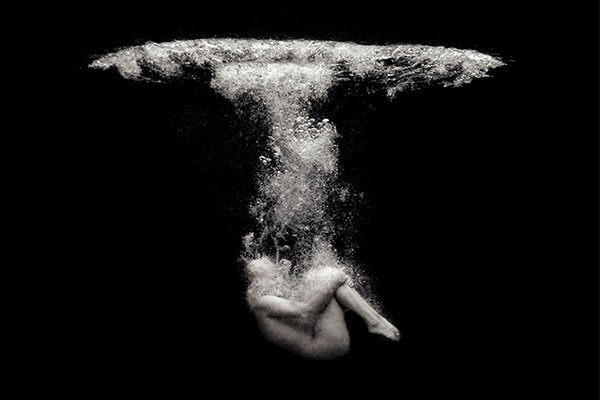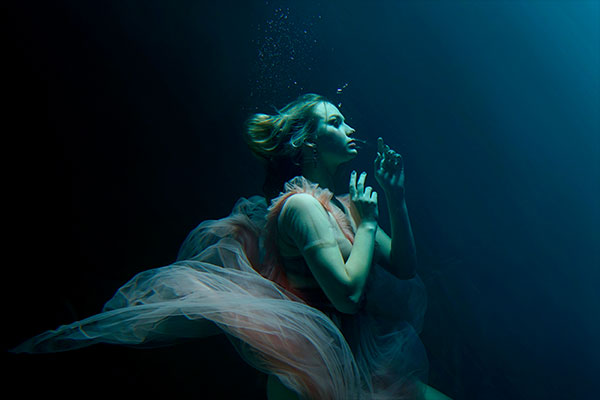Within the natural environment and in the areas surrounding cities across Fukushima prefecture, I have captured the invisible pain of radiation.
With an ear to the rhythm of the seasons as in traditional Japanese engravings and inspired by their refined, uncluttered style, I hoped to capture the fleeting moments, the movements of climatic phenomena, and the ever-shifting perceptions of nature, where radiation accumulates the most. I used a pinhole camera with long exposure times to create a record of the presence of radioactive danger. A dosimeter measured the level of radiation in micro Sieverts (µSv) received during each exposure. Each photo is an accumulation of visual fragments taken in the same location but from different angles, always accompanied by the radiation level to which my film was exposed. The result is a combination of all those elements. A process of staggered superimpression creates a vibration, a departure from the reality of the subject that reveals the presence of radiation in the image. The process reinvents and twists the very landscape, leading to a sort of vertigo or malaise linked to the quivering of the invisible. My ambition with this project was to find a balance and organization in a chaotic world, while emphasizing the intransience of beauty. I also sought to test the bounds of photography by challenging its ability to render an image of what is invisible to the eye by means of time and distortion.
About Florian Ruiz
I create photographic projects in desperate, stained, and disillusioned social situations. My aim is to express the atmospheres, feelings, and sensations of desolate places. I try to capture the in-between, life at the margins, and borderlines of lives and places. I am currently using rudimentary photographic equipment, a pinhole camera, to portray the unexpected, the fortuitous, and the deformed as a multiple reality. It allows me to capture the landscape as time unfolds.
I regularly show my pictures in international festivals and in several magazines dedicated to contemporary photography. My most recent work, « Fukushima, invisible pain » is second of the World Photography 2013 in the Conceptual category and finalist of the International Emerging Artist Award 2013. I’m living and working in Tokyo. [Official Website]


